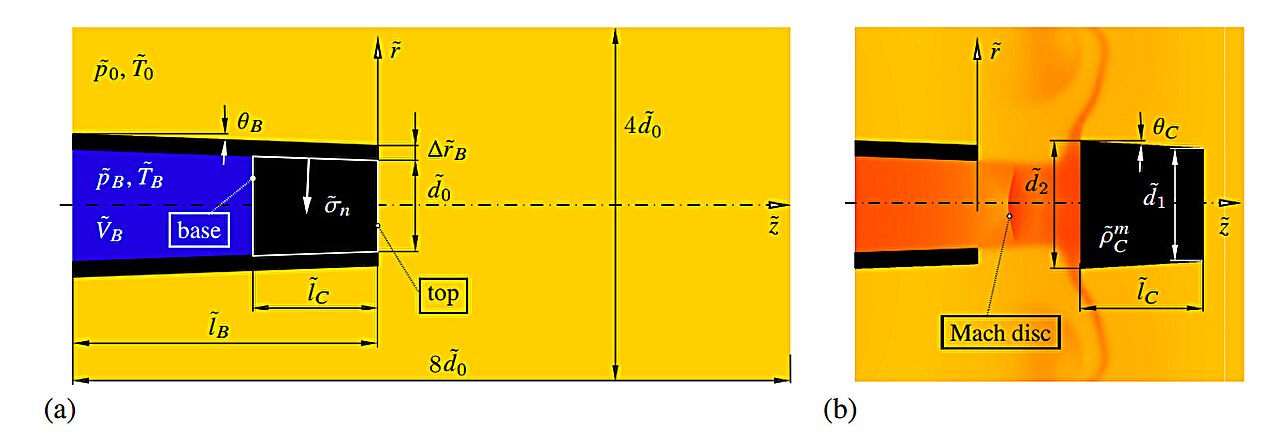It sounds like a simple, well-known everyday phenomenon: there is high pressure in a champagne bottle, the stopper is driven outwards by the compressed gas in the bottle and flies away with a powerful pop. But the physics behind this is complicated.
[…]
Using complex computer simulations, it was possible to recalculate the behavior of the stopper and the gas flow.
In the process, astonishing phenomena were discovered: a supersonic shock wave is formed and the gas flow can reach more than one and a half times the speed of sound. The results, which appear on the pre-print server arXiv,
[…]
“The champagne cork itself flies away at a comparatively low speed, reaching perhaps 20 meters per second,”
[…]
“However, the gas that flows out of the bottle is much faster,” says Wagner. “It overtakes the cork, flows past it and reaches speeds of up to 400 meters per second.”
That is faster than the speed of sound. The gas jet therefore breaks the sound barrier shortly after the bottle is opened—and this is accompanied by a shock wave.
[…]
“Then there are jumps in these variables, so-called discontinuities,” says Bernhard Scheichl (TU Vienna & AC2T), Lukas Wagner’s dissertation supervisor. “Then the pressure or velocity in front of the shock wave have a completely different value than just behind it.”
This point in the gas jet, where the pressure changes abruptly, is also known as the “Mach disk.” “Very similar phenomena are also known from supersonic aircraft or rockets, where the exhaust jet exits the engines at high speed,”
[…]
The Mach disk first forms between the bottle and the cork and then moves back towards the bottle opening.
Temporarily colder than the North Pole
Not only the gas pressure, but also the temperature changes abruptly: “When gas expands, it becomes cooler, as we know from spray cans,” explains Lukas Wagner. This effect is very pronounced in the champagne bottle: the gas can cool down to -130°C at certain points. It can even happen that tiny dry ice crystals are formed from the CO2 that makes the sparkling wine bubble.
“This effect depends on the original temperature of the sparkling wine,” says Lukas Wagner. “Different temperatures lead to dry ice crystals of different sizes, which then scatter light in different ways. This results in variously colored smoke. In principle, you can measure the temperature of the sparkling wine by just looking at the color of the smoke.”
[…]
The audible pop when the bottle is opened is a combination of different effects: Firstly, the cork expands abruptly as soon as it has left the bottle, creating a pressure wave, and secondly, you can hear the shock wave, generated by the supersonic gas jet—very similar to the well-known aeroacoustic phenomenon of the sonic boom.
[…]
More information: Lukas Wagner et al, Simulating the opening of a champagne bottle, arXiv (2023). DOI: 10.48550/arxiv.2312.12271
Source: Clarified at last: The physics of popping champagne

Robin Edgar
Organisational Structures | Technology and Science | Military, IT and Lifestyle consultancy | Social, Broadcast & Cross Media | Flying aircraft
